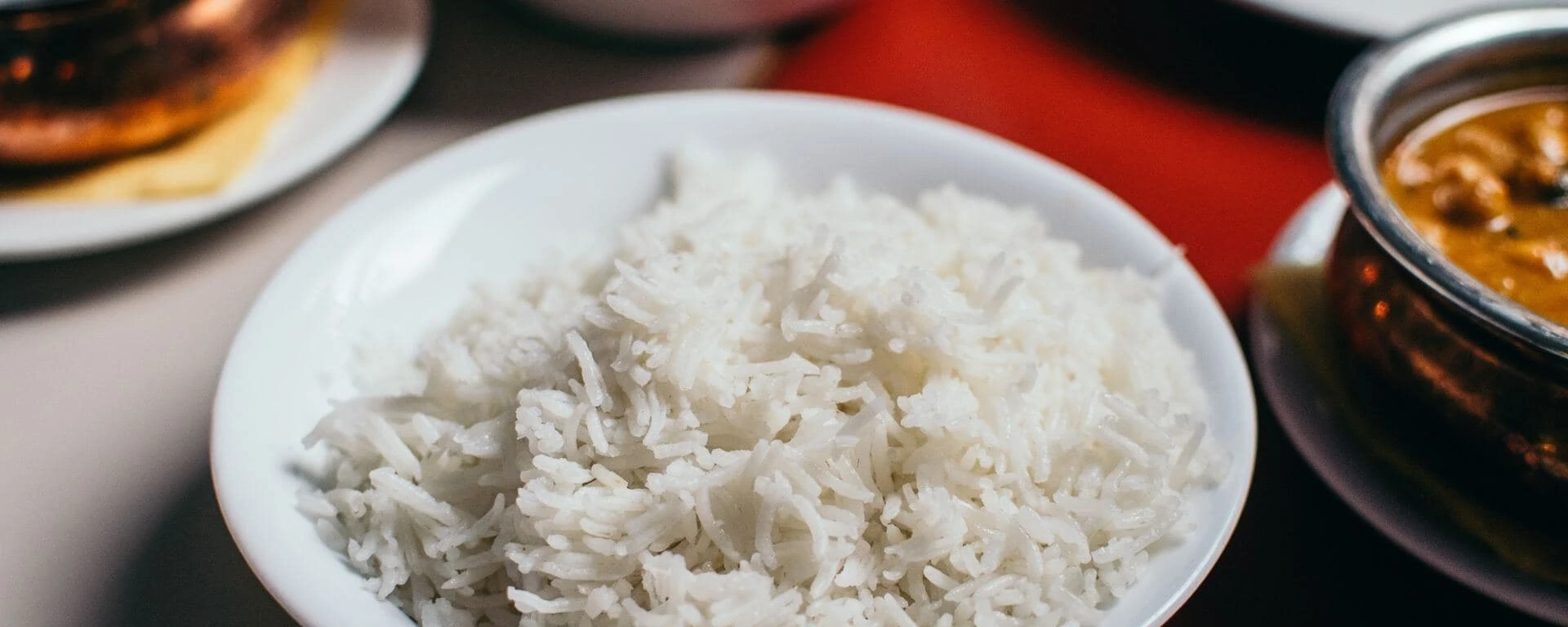
White potatoes or sweet potatoes? White rice or brown rice? Gluten a go … or no? Keto or moderate carbs?
As you can see, navigating the land of carbs can seem complicated. But it truly doesn’t have to be. Here, we’ll dive into the carb storm and get to the truth of one of the most important macronutrients for your performance and gains (yep, I said it).
Carbohydrates: Why They’re NOT Evil

To preface, there are no denying diets like the keto diet or AIP diet (or other diets for autoimmune conditions) that hold a beneficial place in the diet world. These types of diets that eliminate entire food groups for a specific purpose and a specific amount of time are great for healing certain conditions, cutting weight quickly, or even to manage a food intolerance.
However, there’s also no getting around the fact that glucose from carbs is the preferred fuel source of your body and brain. When given the choice between using fat or carbs for energy, your cells will opt for the carbs. [*]
We also recognize that just because your body can technically get by on no carbs by burning fat … this doesn’t necessarily mean that running on no carbs is your body’s optimal state 24/7.
In fact, unless you are dealing with blood sugar or other issues that require a low-carb diet intervention, you may actually be limiting your gains and performance by completely cutting carbs for an extended period of time. This is especially true if you’re an athlete or working out heavily most of the week. Let’s take a look at why.
Carbs are your preferred energy source.
Your body derives energy in the form of ATP from glucose to fuel activities. This is especially true during high-intensity workouts, where fast energy is needed to fuel muscle firing.
To understand this, it helps to understand a little about our energy pathways. At any given time, your body is never burning just carbs or just fats: it simply adjusts the ratio of which one its burning more of depending upon which energy pathway you’re using.
For instance, when you’re sitting or even going on a slow walk or doing daily activities, you’re using your aerobic system and burning mostly fatty acids for energy. However, if you decide to do sprints or an intense flow, you’ll be activating your anaerobic system, which naturally reaches for more carbs to produce ATP, rather than fats.
The thing is your body stores very limited amounts of readily available glucose. If not replenished, your stores become depleted, and your body has to make the shift to using fat for fuel. There’s nothing wrong with this, per se, but if you’re an athlete and have ever felt the feeling of hitting a wall during training, this is probably one of the reasons why. Fat can be used as fuel, but the energy supply isn’t as quick when intensity is required. Especially when that intensity involves fast action in muscle fibers, like during HIIT training.
The key takeaway here is that if you’re looking to improve performance, endurance, response time, etc … cutting carbs may slow the process because the process of using fat for fuel can take longer than using the glucose pathway.
Won’t Carbs Jack Up Insulin and Promote Fat Storage?

One of the biggest contentions surrounding carbs is the fact that, yes, they do spike insulin levels, and yes, that can lead to fat storage. However, and this is a big one, however, this highly depends on the type of carbs you’re eating, how many in one meal, what you’re eating them with, and your training level.
Carbs from whole food sources that have all of their fiber and nutrients intact typically have a pretty low glycemic index, meaning they cause a minimal insulin spike. This is minimized even more when eaten with a protein or fat, which slows the release of glucose into your bloodstream and thus reduces your insulin spike.
Processed carbs not coming from whole foods have their fiber removed, leaving only pure sugars that rapidly enter your bloodstream and spike insulin to high levels. If this happens repeatedly, your body will attempt to store the excess glucose as fat to remove it from your bloodstream to save you from the damaging effects of high blood sugar.
The key with this is that your body (when healthy with no insulin issues) will convert glucose to fat only when there is too much glucose coming in too quickly, and only when muscle and liver stores of glucose (glycogen) are full. When you consume moderate amounts of whole food carbs as fuel for your muscles and activity, they will be released slowly and be taken up by your muscles and liver to be stored for your next activity, which is a good thing, because it fuels performance.
We get into trouble with carbs when we eat them in processed form and eat above and beyond our training needs.
So How Many, and What Type of Carbs Should You Consume?
 Obviously, not everyone’s need for carbs will be the same. The number of carbs you need to consume on a daily basis doing an hour workout 5 days a week will be totally different than someone else training 6-7 days a week, several hours a day for a competition or a match. Other people may also not respond as well from an insulin standpoint and require or thrive on fewer carbs overall.
Obviously, not everyone’s need for carbs will be the same. The number of carbs you need to consume on a daily basis doing an hour workout 5 days a week will be totally different than someone else training 6-7 days a week, several hours a day for a competition or a match. Other people may also not respond as well from an insulin standpoint and require or thrive on fewer carbs overall.
The point is that you should tinker with whole, real food carb sources to determine your ideal amount. Perhaps eating a whole sweet potato a day is too much for you, and instead of eating a banana with breakfast feels better and you start to see gains. Just because the sweet potato isn’t working for *you* specifically doesn’t mean it’s time to banish carbs altogether.
You may also be able to reduce carbs a little more if your training schedule has slowed down, or you want to lean out a little quicker than normal. Again, it all depends on your goals. And if you do decide to drop carbs for whatever reason, a carb cycling approach where you reduce carbs for a specific period of time, then “refeed” by eating more carbs for a few days or a week, maybe a better approach than say, forcing yourself into keto for several months.
Strategy: Experiment with different carb amounts, and different types, just keep them in whole form. Be sure to only eat a serving at a time combined with healthy fat and protein.
• Nix: chips, flour, pasta, bread, cookies, granola bars, gluten grains (can irritate the gut and increase inflammation) and anything in a package.
• Focus on: sweet potatoes, beets, carrots, squash, yucca, parsnips, berries, quinoa, etc … and eat them with a serving of protein and healthy fat.
The Dolce Diet: Carbs Made Simple

When in balance, your body thrives on all food groups: fats, protein, and carbs. This is why I love the Dolce Diet because it includes each of your macros from whole, real food sources. If we avoid a food group such as dairy or certain grains, it’s because they contain unnatural (i.e.: not real) hormones, inflammation-inducing gluten, artificial chemicals, or genetically-modified ingredients.
Instead, the focus is on the quality and quantity of whole food sources of carbs your body needs and craves, versus the artificial kind that encourages fat storage. Think sweet potatoes ad squash versus bread and pasta made with processed flour. These carbs are then balanced with plenty of protein and healthy fats to minimize their glycemic impact so that, instead of storing them as fat, we use them as fuel for gains.
This is a great post. Sensible, based on real science, recognizing nuance instead of the extreme advice that is often published. Thank you.
Happy to hear you enjoyed it 🙂
Great post. I would love to read more on how age affects all of this. I am a 48M, and I certainly can’t handle the carbs I could when I was younger. Would enjoy hearing more on that. Cheers!
Thanks! Glad you enjoyed it we’ll definitely keep the conversation going 🙂